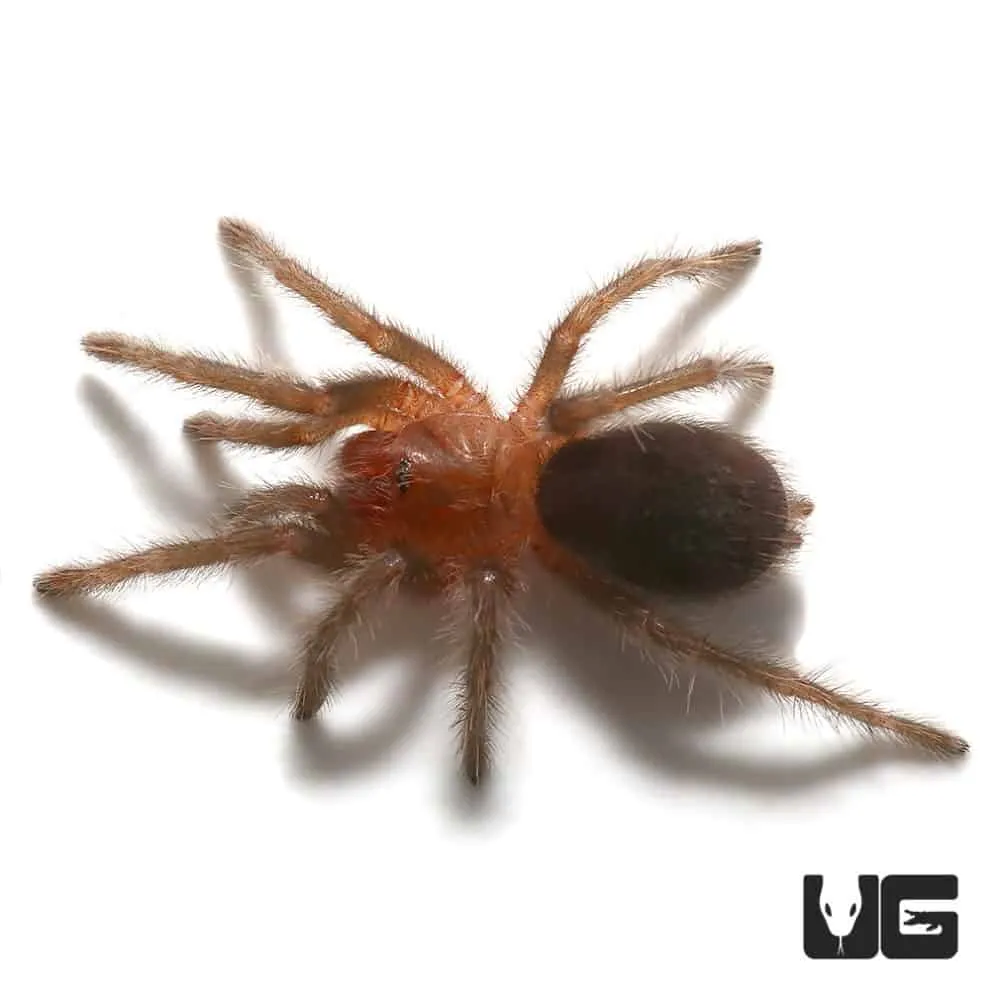Brazilian Black Tarantulas, with their striking ebony appearance, are popular pets, and proper feeding is fundamental to their health and longevity. Understanding their dietary needs is crucial for any tarantula keeper. This comprehensive guide provides essential information on what these fascinating creatures eat, how often to feed them, and best practices for a thriving tarantula. From selecting the right insects to addressing common feeding challenges, this guide covers all aspects of Brazilian Black Tarantula feeding, ensuring you can provide the best possible care for your pet. Effective feeding not only ensures the tarantula’s survival but also promotes its growth, molting, and overall well-being, transforming a simple act into an essential part of pet ownership.
What Do Brazilian Black Tarantulas Eat
Brazilian Black Tarantulas are primarily insectivores, meaning their diet consists mainly of insects. In the wild, they are opportunistic hunters, feeding on whatever prey they can overpower. In captivity, providing a balanced diet of live insects is crucial for their health. The type of insects you offer should be nutritious, readily available, and of appropriate size. It is important to vary their diet to ensure they receive a range of nutrients. While other food sources might be considered, live insects remain the cornerstone of a healthy Brazilian Black Tarantula diet, mimicking their natural feeding habits and providing essential proteins, fats, and vitamins.
Insects as a Staple Diet
Insects form the foundation of a Brazilian Black Tarantula’s diet. The availability of these insects allows the tarantula to get the nutrients it needs. The nutritional value of each insect type can vary, so offering a variety can help provide a balanced diet. Proper gut-loading of insects before feeding them to your tarantula can significantly enhance their nutritional value. This involves feeding the insects a nutritious diet, which, in turn, enriches them with vitamins and minerals that the tarantula will consume. This proactive approach to feeding ensures the tarantula receives all the essential elements for optimal health and vitality.
Crickets
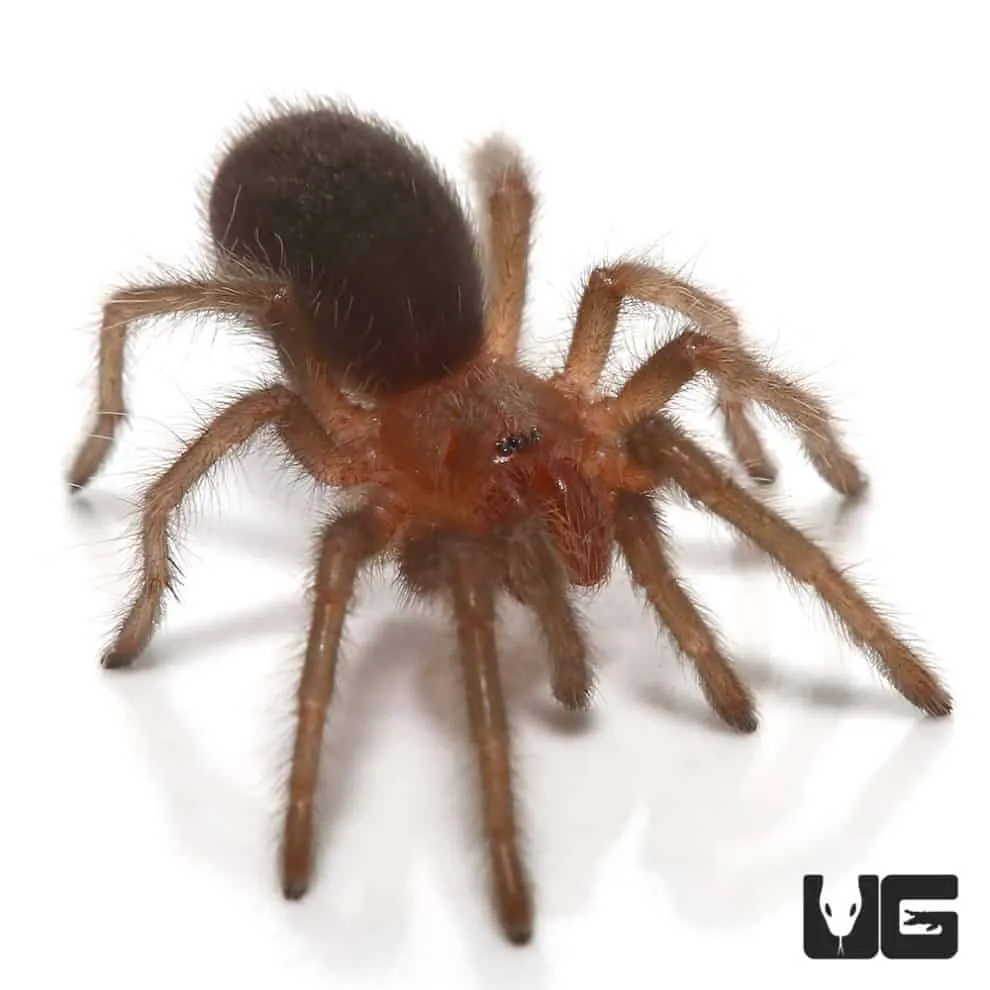
Crickets are a widely available and easily digestible food source. They are rich in protein and provide good nutrition for your tarantula. When choosing crickets, it’s important to select those that are of appropriate size for your tarantula. It is also important to gut-load the crickets with a nutritious diet (such as commercial cricket food, fruits, and vegetables) before feeding them to your tarantula. This will increase their nutritional value, providing your tarantula with the vitamins and minerals it needs to thrive. Make sure to remove any uneaten crickets from the enclosure to prevent stressing the tarantula.
Roaches
Roaches, particularly Dubia roaches and hissing roaches, are an excellent food option. They are higher in protein and lower in chitin (the hard outer shell) compared to crickets, making them easier to digest. Roaches also tend to live longer than crickets, which means you can buy them in larger quantities. Like crickets, roaches should also be gut-loaded before feeding. The convenience and nutritional benefits of roaches make them an excellent addition to a Brazilian Black Tarantula’s diet. Introducing roaches can also provide your tarantula with an alternative food source, increasing the variety in their diet.
Mealworms
Mealworms can be a part of the diet, but they should be offered in moderation. They are high in fat and may not provide the same level of nutritional value as crickets or roaches. It is also worth noting that mealworms can sometimes burrow in the substrate, which might stress your tarantula. Therefore, if you are offering mealworms, it is important to monitor them and remove any uneaten ones. Always ensure that the mealworms are from a reliable source. While mealworms can be a supplement, relying heavily on them is not advisable, and balance is key to a healthy tarantula diet.
Other Insects

Other insects, like super worms, wax worms, or even spiders, can be offered occasionally. However, they should be considered treats rather than staples due to their higher fat content. The availability of these insects may vary. Variety can be beneficial, but always prioritize gut-loaded, nutritionally balanced insects. By diversifying the diet with different insects, you can ensure that your Brazilian Black Tarantula receives a wide range of nutrients, helping to promote its health and well-being. Proper research into the nutritional profiles of the insects will help you make informed decisions about their inclusion in your tarantula’s diet.
Feeding Frequency
The feeding frequency of your Brazilian Black Tarantula depends on its age. Juveniles and adults have different needs. Regularly monitoring your tarantula is key to adjusting feeding schedules based on its behavior and overall health. Keep an eye out for signs of overfeeding, such as a bloated abdomen, or underfeeding, such as a noticeably thin abdomen. It is important to find a balance that suits your tarantula’s individual needs, adjusting the diet as it grows and develops. Always provide fresh water, as hydration is essential for digestion and overall health.
How Often to Feed Juvenile Tarantulas
Juvenile Brazilian Black Tarantulas, those in the early stages of development, require more frequent feeding due to their faster growth rate. Generally, they should be fed every other day to every three days. Offer a small number of appropriately sized prey items. Make sure the prey items are small enough for the juvenile to handle and consume without difficulty. Providing ample food during this stage is important to support their development, molting, and overall health. Keep a close eye on the juvenile’s abdomen and adjust the feeding frequency accordingly.
How Often to Feed Adult Tarantulas
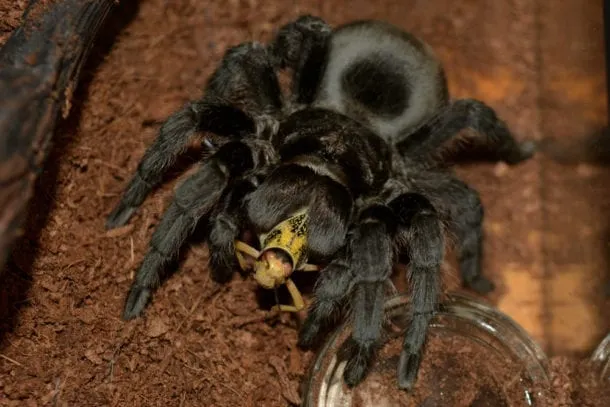
Adult Brazilian Black Tarantulas have slower metabolisms and thus require less frequent feeding. Adults can typically be fed every five to fourteen days, depending on their size, activity level, and appetite. Always monitor the tarantula’s abdomen for signs of overfeeding or underfeeding. Adjust the feeding schedule as needed to maintain a healthy weight and energy level. Providing an appropriate feeding schedule will contribute to their longevity and well-being. Ensure to offer a varied diet of appropriately sized insects to maintain their nutritional needs.
Prey Size Guide
The size of the prey is an important factor in tarantula feeding. Providing prey that is too large can stress or injure the tarantula, while prey that is too small may not provide enough nutrition. The size of the prey should be carefully chosen to ensure optimal feeding and health for your Brazilian Black Tarantula. The right-sized prey can contribute to the tarantula’s overall well-being, while improperly sized prey can lead to serious health issues. Carefully monitor your tarantula to ensure it can handle the prey you provide.
Importance of Proper Prey Size
Offering the correct prey size is crucial. The general rule is that the prey should be no larger than the tarantula’s body, excluding the legs. Choosing the correct size prevents the tarantula from being overwhelmed or injured. The prey should be small enough for the tarantula to easily subdue and consume. If the prey is too large, the tarantula may struggle and potentially be harmed. Similarly, a prey item that is too small will provide an insufficient amount of nutrients. By ensuring that the prey is appropriately sized, you contribute to the safety and nutritional needs of your tarantula, promoting its health.
Adjusting Prey Size as Tarantula Grows
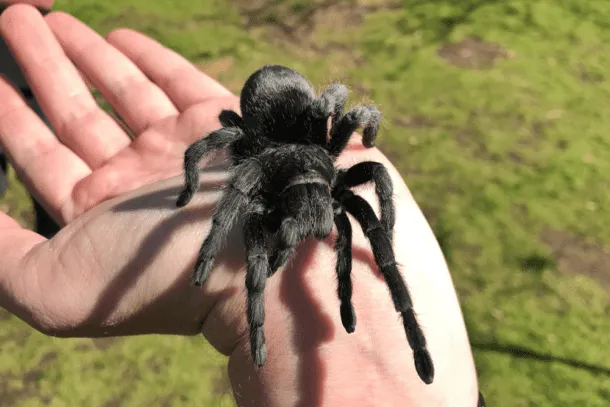
As your Brazilian Black Tarantula grows, the prey size must be adjusted accordingly. Monitor the tarantula’s growth and gradually increase the size of the insects you offer. Keep records of your tarantula’s growth and molting. This helps you track changes in its size and adjust feeding accordingly. Consistent monitoring will help prevent overfeeding or underfeeding, maintaining the tarantula’s health. Regularly assess the size of the prey to ensure it aligns with the tarantula’s current size. The size of the prey should be proportionate to the tarantula’s body size to ensure adequate nutrition and prevent any potential difficulties.
Feeding Techniques
The manner in which you feed your Brazilian Black Tarantula can significantly impact its well-being. Using appropriate techniques will minimize stress and ensure that your pet safely consumes its food. Providing a safe and suitable environment is important, as it contributes to the overall health. By following these techniques, you can ensure a positive feeding experience for your tarantula, promoting its overall health and happiness. Providing a stress-free feeding experience is a vital aspect of tarantula care.
Placing Food in the Enclosure
Carefully place live insects directly into the tarantula’s enclosure. You can use a pair of tongs to introduce the prey, which helps to keep your hands safe. Ensure that you gently release the prey near the tarantula. The tarantula will typically sense the movement and approach the prey. Avoid dropping the prey on the tarantula, as this can be stressful. Creating a calm and secure feeding environment is crucial for a successful feeding session. This technique will allow the tarantula to hunt its prey in a way that mimics its natural behavior.
Removing Uneaten Prey
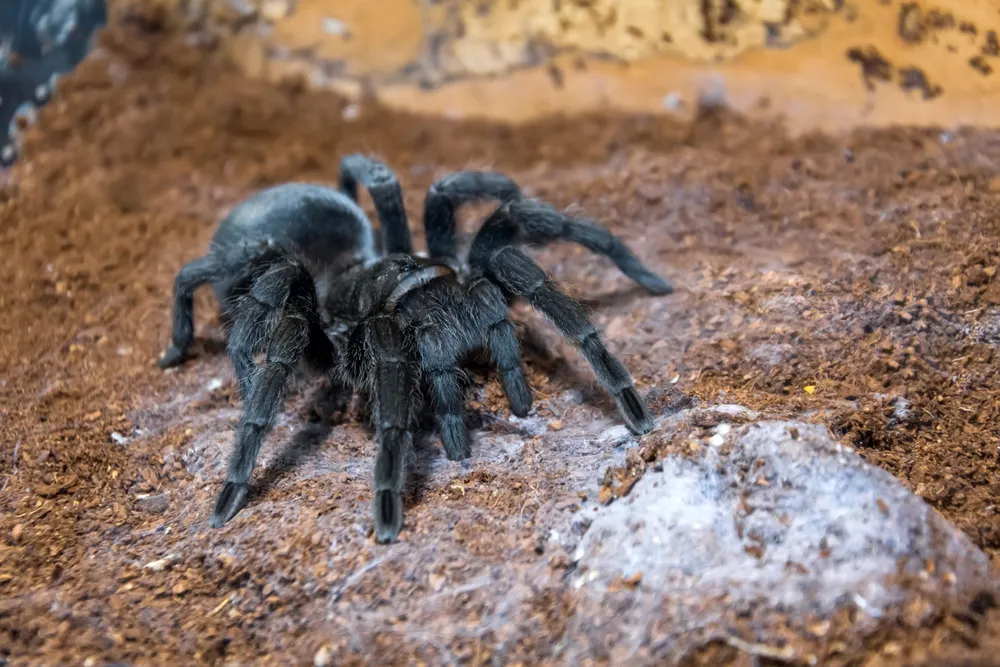
It is important to remove uneaten prey within 24 hours to prevent stressing your tarantula. Uneaten insects can harass the tarantula or even bite it, causing stress or injury. Uneaten crickets can also be noisy and disrupt the tarantula’s environment. Regularly checking the enclosure and removing any uneaten insects is an essential part of the care routine. Removing these insects will help maintain a clean, safe, and stress-free habitat for your tarantula. Using tongs or a small net can help in removing the insects without disturbing the tarantula.
Handling Live Prey Safely
Always handle live prey with care to avoid injury to both the tarantula and yourself. Use tongs to introduce insects, as this prevents direct contact with the prey. If the prey is too large or aggressive, the tarantula may hesitate to eat. Properly sized prey will reduce the likelihood of bites. When introducing prey, observe the tarantula’s behavior to ensure it is not stressed or threatened. By following these safety precautions, you can ensure that the feeding process is safe and effective for both you and your tarantula. This approach helps to create a safe and positive feeding experience.
Providing Water for Hydration
Providing fresh water is crucial for your Brazilian Black Tarantula’s health. Proper hydration supports the molting process, digestion, and overall well-being of the tarantula. Offering clean, fresh water is essential for maintaining a healthy environment. Without proper access to water, tarantulas can become dehydrated, which can lead to serious health problems. A consistent supply of fresh water is therefore a non-negotiable aspect of tarantula care.
Water Dish Essentials
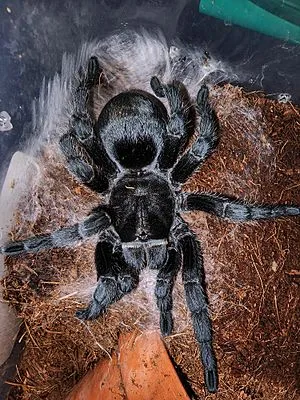
Provide a shallow water dish that is easily accessible to your tarantula. The dish should be shallow enough to prevent drowning but large enough for the tarantula to comfortably drink from. Use a small, stable dish made of plastic or ceramic. Ensure that the dish is stable to prevent spills. Consider adding small pebbles or marbles to the water dish to prevent smaller tarantulas or other insects from drowning. Maintaining the water dish cleanliness is just as important to help prevent disease. Always monitor the water level and add fresh water as needed to keep your tarantula hydrated and healthy.
Importance of Fresh Water
Change the water in the dish regularly, ideally every day or every other day, to prevent bacterial growth. Use dechlorinated water or bottled water to avoid exposing your tarantula to harmful chemicals. Regularly clean the water dish with warm water and mild soap to remove any dirt or debris. Cleanliness is essential to avoid contamination, ensuring your tarantula drinks water that is safe and beneficial. By maintaining a clean water source, you help prevent health issues and ensure your tarantula stays hydrated. Always prioritize the quality of the water to safeguard the tarantula’s health.
Feeding Challenges and Solutions
Even with the best care, you might encounter feeding challenges. Understanding these challenges and having solutions ready will help you provide the best possible care. Sometimes, tarantulas can become finicky eaters. Learning how to address these challenges ensures your pet stays healthy and thriving. Addressing common issues, such as refusal to eat or problems during premolt, is critical to providing good tarantula care. Having an understanding of these issues and how to resolve them is an important part of responsible pet ownership.
Dealing with Refusal to Eat
If your tarantula refuses to eat, there might be several reasons. The most common is stress. Check the environment for any disturbances or stressors, such as loud noises, vibrations, or sudden movements. Ensure the enclosure has adequate temperature and humidity levels, as extreme conditions can reduce appetite. In addition, a tarantula may refuse food because it is in premolt, or about to shed its exoskeleton. Provide a quiet, undisturbed environment to reduce stress. Monitor your tarantula’s behavior and the enclosure conditions to identify any potential causes of the refusal and address them.
Addressing Premolt Fasting
Tarantulas often stop eating before they molt. This is a natural part of their life cycle. Look for signs of premolt, such as a darkening abdomen or changes in behavior. It is not uncommon for tarantulas to stop eating for several weeks. Do not force-feed during premolt, as this can stress the tarantula. Reduce the amount of disturbance during this time. Provide a water dish with fresh water. Once the molt is complete, your tarantula will resume eating. Understanding the molting process will help you be prepared. This understanding of the molting process can help avoid unnecessary concern during this period.
Troubleshooting Feeding Problems
If feeding problems persist, consider consulting with an experienced tarantula keeper or veterinarian. Review your tarantula’s enclosure conditions. Always ensure the enclosure provides the proper temperature and humidity levels to promote a healthy appetite. Check that you are providing the correct size and type of prey. Review your feeding schedule, adjusting it based on the tarantula’s age and activity. By systematically addressing any potential issues, you can resolve most feeding problems, improving your tarantula’s health and well-being. Consistent monitoring and informed troubleshooting are essential for maintaining a healthy and thriving tarantula.
In conclusion, feeding your Brazilian Black Tarantula involves more than just offering insects. It is a careful process of providing the right food, at the right time, and in the right way. By following the guidelines outlined in this guide, you can ensure that your tarantula receives the proper nutrition to thrive. This not only enhances the health and longevity of your pet, but also allows you to enjoy the fascinating behaviors and beauty of this unique species for many years to come. Responsible tarantula keeping is both rewarding and essential. Remember that every tarantula is an individual, and their needs may vary. Always observe your pet closely. Be prepared to adjust your methods as needed to meet its specific needs and promote a long, healthy life.
